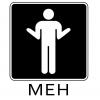Currently in AE we have a Max Seats parameter to describe the seating capacity of an aircraft.
This Max Seats parameter equals the maximum certified evacuation seat number of an aircraft. (FAA exit limit)
This FAA exit limit not suitable to describe the cabin size and the possible cabin configurations of an aircraft, becuse this FAA exit limit does not always match the cabin capacity of an aircraft.
Max seats = cabin capacity = exit limits
Please check the following example for the Airbus A340 series aircrafts:
Airbus factory datas: http://www.airbus.co...aft/a340family/
A340-200
Max seats in AE: 420
Cabin lenght: 46,06 m
Cabin width: 5,28 m
A340-300
Max seats in AE: 440
Cabin lenght: 50,35 m
Cabin width: 5,28 m
A340-500 (this aircraft intended for ultra long range flights)
Max seats in AE: 375
Cabin lenght: 53,56 m
Cabin width: 5,28 m
A340-600
Max seats in AE: 475
Cabin lenght: 60,98 m
Cabin width: 5,28 m
An Airbus A340-500 cabin is bigger than a A340-200 by more than 6 meters, in the reality if I configure
- 20F 60C 274Y (354) for both aircraft I will have more space in the A340-500.
Currently in AE I can configure only the following cabin config for A340-500, which has larger cabin than the A340-200:
- 20F 60C 229Y (309)
Using FAA exit limits to determine the actual seating capacity of an aircraft can be misleading in some cases. For bigger planes the max passengers certification process depends on the manufacturers strategy, let's see a simple example. We have two planes Airbus_1, and Boeing_1ER, both plane have the same cabin size, both designed for ultra long range flights.

 Sign In
Sign In Create Account
Create Account

 Find content
Find content

